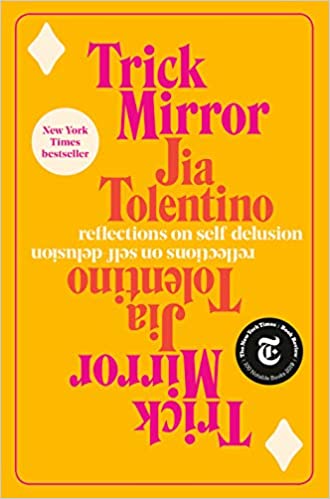
Scott Belsky’s Elephant List
Adobe’s CPO on relentlessly taking action even on the problems no one is talking about
July 8, 2020
Every important thought in Scott Belsky’s head immediately goes into his todo list.
And every item on Scott Belsky’s todo list starts with a verb:
- Discuss
- Follow up
- Meet
- Ensure
- Track
That’s because the important things to Scott Belsky are the things he can take action on. Everything else is just noise.
He’s an entrepreneur, a bestselling author, an investor, and he currently serves as the Chief Product Officer at Adobe. He joined Adobe when they acquired his last company, Behance, for $150 million in 2012.
For Scott, writing down only what’s actionable means he avoids the thing he fears the most: letting something fall through the cracks. “When I forget things I get very upset. Like ‘Oh my gosh, what if that was the one thing I needed to do or track that will make the difference.”
And his commitment to productivity isn’t just personal: as CPO of Adobe he’s also thinking about it at an organizational level.
So what makes organizations productive? Making hard decisions.
Scott’s noticed that as companies get older they begin to put off hard decisions. They get put off because they’re too political, or too expensive, or too risky for the company’s sclerotic bureaucracy. They’ve been put off for so long that people inside of the organization don’t even talk about them anymore -- they just silently deal with them as a fact of life.
Scott calls these unmade (and often unspoken) decisions the elephants in the room: they’re the unsaid things lurking in every meeting. They’re what’s on everyone’s mind, but that no one wants to say.
One of his favorite challenges at Adobe is to uncover and tackle elephants to help unlock his team’s productivity.
He has a list in his Notion called his “Elephant List” -- where he tracks all of the elephants at the company. Before big meetings he even has the leaders on his team email him a list of the elephants they see so that they can be resolved as quickly as possible.
In this interview we talk about Scott’s penchant for taking action, how he identifies and deals with the elephants in the room, and even how he organizes his calendar.
Let’s dive in!
Scott introduces himself
I started a company called Behance back in 2006. Behance was acquired by Adobe in 2012, and I now serve as the Chief Product Officer at Adobe. Over the years, I’ve been an advisor to many startups. I’ve also written two books: Making Ideas Happen and The Messy Middle.
How he thinks about productivity
I believe that everything should be tracked and captured.
This partially sprouts from my constant worry that I’ll forget a task – writing things down calms this worry. But carrying these ideas around also slows me down and prevents me from focusing on other things. If I track and capture the ideas, thoughts, and to-dos in my head, I’m not carrying them around anymore. That way, I have more RAM to dedicate to my most important tasks.
This belief system has created a whole series of methodologies that I’ve used over the years, and it’s dictated much of how I’ve built my professional life and business. For example, when we were bootstrapping Behance, I was so obsessed about capturing tasks that we created Action Books, notebooks that were specifically designed for this purpose. Although Action Books no longer exists as a product, it shows how much the obsession with tracking tasks is built into who I am and what I do.
My career has been focused on helping creatives be more productive, and I think tracking everything is an important start. Creatives are notorious for not being organized or task-driven, but it’s been my mission to be productive myself, and to help make my teams productive.
How he ensures to-do list tasks actually get done
I’m maniacal about having an actionable to-do list. Notes aren’t very useful because we can’t capture the actions we need to take so that we can execute on them over time. An action-driven to-do list is far more impactful.
Over the years, I’ve tried a number of different to-do list solutions and have even built my own. Today, I use Microsoft To Do, which is a straightforward to-do list app that gives me the ability to organize by macro-themes.
To make a to-do list that’s filled with items you can take action on, make sure everything starts with a verb. This gives a clear action for what you’re supposed to do with that item. Scanning over my to-do list now, I see the following verbs at the beginning of each item:
- Discuss
- Go-to
- Bring
- Get
- Share
- Catch up on
- Ensure
Sometimes, if I’m waiting for input from someone else before moving forward, items say “waiting” or “waiting for follow up.”
If something doesn’t have a due date, it may as well be lost. If you want to make sure these items get done, everything should have a due date. Even if the date is somewhat arbitrary, seeing it on your list with a date assigned keeps you in the rhythm of seeing what you are (and aren’t) getting done. I don’t love how this is handled in Microsoft To Do because there’s a tiny bit of friction in adding a due date. I would love every task to have a due date by default.
How he culls his to-do list
Many of us have binge periods where we have a couple of hours to really get to work. During these periods, I clear as many outstanding tasks as I can. I call this a culling period.
To-dos don’t get magically crossed off, even if I’m constantly working to make my way through the list. That’s why I use these culling periods to complete outstanding tasks, delay and change due dates, and delete what’s no longer relevant.
For example, right now, my to-do list has 25 or so overdue tasks, simply because I just came back from a long weekend and haven’t gone through these tasks yet. Many of them are recurring, as well, popping up daily, weekly, or monthly. For example, reviewing my elephant list is a recurring to-do.
Building in culling periods not only ensures my to-do list is well managed, but it also helps me make sure things are getting done. Many of the tasks on my to-do lists require a bit of time and attention. During a culling period, I can give them what they need.
Why lists are better than notes
Notes aren’t useful. I very seldom take notes in meetings and I seldom refer to other people’s notes. This is because notes aren’t very actionable. They don’t give you anything to execute on and it’s impossible to use them to track what you’ve managed to accomplish over time.
Even though I’m not very interested in taking notes, I do use tracking lists to record things that are not necessarily actionable, but still very important. Some of these are thoughts or more strategic ideas. These days—and maybe it's because of my particular role at Adobe— the things that I capture are screenshots of whiteboards, concepts, frameworks, or other things that simplify a strategy or idea.
I keep my tracking lists in Notion. I have recurring reminders to review these lists, and they range from ideas I’m actively brewing to elephants I am tackling on various teams and projects.
My major tracking list is an evolving list of things that are really, really important to me. Many of them are long-term goals. If I were reading a book about what my team accomplished three to five years from now, these are the things I’d want to have happened. The items on this list are like centers of gravity. I force myself to look at them every two weeks to see if I’ve made any progress.
My hope is that my process of using tracking lists, as well as to-do lists, is helping me refine my own ways of looking at the world. By tracking and recording my thoughts and ideas, I hope that I’m making them more readily available when they’ll be of use. Some of these ideas and ongoing ruminations could prove valuable many years from now, to solve some distant problem I can barely imagine.
I’m reminded of the famous story about Paul Rand and Steve Jobs. Paul Rand, a famous graphic designer, was hired to create Apple’s logo. The two went on a walk, and Rand pulled out a notebook and drew Apple’s logo. Steve Jobs was confused. How could he be paying Rand thousands of dollars to get a logo in 30 seconds? But Rand explained that it actually took him 30 years. Our ideas and insights, tended to over many years, can yield that one breakthrough or pearl that helps you solve a problem or make a critical decision.
Making hard decisions as companies grow and age
Productivity happens at two levels: the individual and the collective. I’ve talked a lot about what I do on a personal level to be productive, but my other fascination is with collective productivity.
I’m interested in what happens as companies grow– whether they’re five years old with 100 people or 30+ years old with 22,000 people, like Adobe. As companies grow and age, they accumulate organizational debt.
Organizational debt is the accumulation of decisions that should have been made but weren't. Decisions are hard to make– a simple decision might mean one team gains while another loses. Sign-offs by multiple teams may be necessary. As a company grows and ages, it becomes even more difficult to make decisions and take meaningful action.
The problem is, neglecting to make a decision causes its own set of problems. Without a decision, there’s no movement. Things stay the same. People stop talking about potential opportunities because they don’t feel they can make a change or impact. People within the organization start assuming that they're stuck with artificial constraints.
In order to combat this lack of decision-making, I’ve taken to calling out the “elephants in the room” -- those things that everyone sees but no one wants to address. Identifying and calling out elephants is one of my favorite things to do because once they’re out in the open, we can develop strategies to eliminate them.
What’s an elephant?
An elephant gets its name from the old saying– the elephant in the room. What’s the biggest item to make a decision on that we’re potentially avoiding or we need leadership’s input on? One of my jobs as a manager is to do things only I can do. This is a way to make the most use of my time. A huge part of my job is calling out these elephants.
Every product, every team, and every company has elephants. Every startup founder I work with as an advisor and investor carries around elephants, as well. I love sussing out what those elephants are and pushing them into the spotlight so everyone else can see it.
How his to-do list helps him find elephants
As mentioned earlier, having a comprehensive to-do list is extremely important to me, and elephants certainly find their way into my to-dos. It’s my view that everything should be written down, so identifying and recording these elephants is no exception.
Every two weeks, I make an elephant list in Notion, which is the elephant in the room of every meeting I attend. I’ll record all of these elephants and also ask for insight from leaders on my team. I ask them to email me in advance of our big meetings what elephants are likely to emerge in a meeting.
Once I have these elephants written down, I see if there are any related to-do items, and then add them to the list. For example, I might have a to-do that’s simply to spend some time considering the best way forward for tackling a certain elephant.
How he persuades his team to take action
In a large company, you often need to persuade people to take action. For example, I often need to convince my colleagues that addressing an elephant is a top priority.
Sometimes, when I’m trying to express something, I remind myself of the principles of advertising. Advertisers use imagery, great copy, visual stimulation, motion graphics, and videos to compel people.
As a leader, I use those advertising tools and principles to get my own team to take action, believe in a cause, or get emotionally invested. We use these strategies to convince people to buy sneakers, so why wouldn’t we use them to get our teams to take action internally?
To create compelling content, I use Adobe Spark. Spark enables anyone to be creative. Rather than using Photoshop, which provides a blank page, Spark offers thousands of templates to modify. And it’s quick. Anyone– whether you consider yourself a creative or not– can modify the fonts, colors, and imagery to a Spark template.
We’ve found that teams often reuse their creations and share “Creative Cloud Libraries” with their colleagues to be consistent with their brand. Ultimately, Spark makes it easy to create a persuasive experience, which is really important when you want to influence colleagues and visually express your ideas.
How he organizes his three different calendars
I have three different calendars– my work calendar, a personal calendar, and a family calendar–but they all meet together. These are pretty straightforward. My work calendar ensures I know what’s required of me at work, my personal calendar helps me prioritize my personal items, and my family calendar helps me keep track of family events.
When it comes to my calendar, there are two things I do that I strongly recommend to anyone working to maximize their time:
- I hold time for thinking. We live in a hyper-connected world, and being disconnected from it can be a competitive advantage. If everyone else is being reactive to what comes to them as opposed to being proactive in what matters most to them, then you stand to make an impact if you hold time for thinking.
- I conduct audits of my time. Every few weeks, I look back at my calendar and audit how I used my time. Did it align with my priorities? Did I spend too much time on a particular project without making time for new ones? This isn’t a perfect science—I’m not using analytics to measure success. But I do step back and look at where my time went.
As I mentioned, I’ll block off areas of my calendar for personal work time, such as when I want to cull my to-do lists. I’ll block time for strategy and execution to make sure I’m thinking through which elephants need to be called out. In this way, I’m able to be as productive as possible.
A Book Recommendation
Right now, I’m reading Trick Mirror: Reflections on Self Delusion by Jia Tolentino. It’s a book of essays about the world we’re living in today. It’s interesting and provocative, addressing themes like overstimulation, hyper-connection, and self-optimization. I also recommend Tribe: On Homecoming and Belonging by Sebastian Junger. The book is about the role of adversity in building community. As we work to build better teams, it really made me think.
How did you feel about this post?
😆- (loved it!) 😐 - (it was okay!) ☹️ - (hated it!)
Did you like this post?
I recently wrote a member’s only post called The Opportunity in Productivity. It’s about the closed alpha note-taking product mymind — a tool that automatically organizes your notes. I think it’s going to be a huge part of the future of productivity, and therefore, all of our lives. You should read it!
The Only Subscription
You Need to
Stay at the
Edge of AI
The essential toolkit for those shaping the future
"This might be the best value you
can get from an AI subscription."
- Jay S.
Join 100,000+ leaders, builders, and innovators

Email address
Already have an account? Sign in
What is included in a subscription?
Daily insights from AI pioneers + early access to powerful AI tools












Comments
Don't have an account? Sign up!